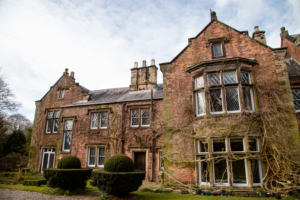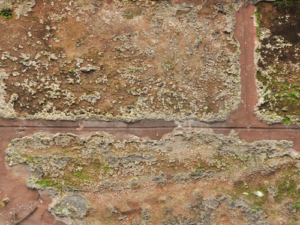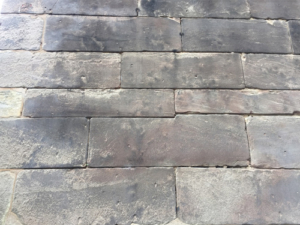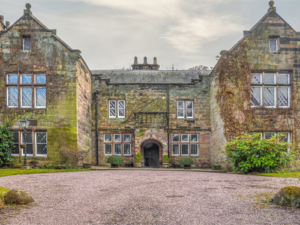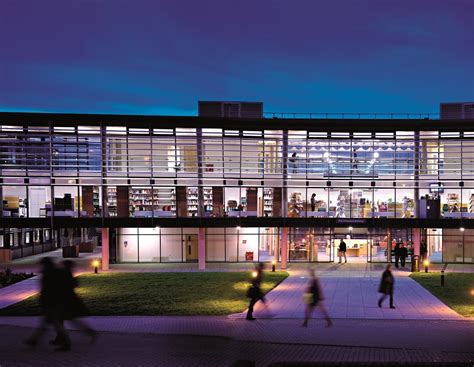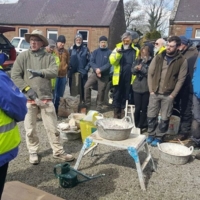This website uses cookies so that we can provide you with the best user experience possible. Cookie information is stored in your browser and performs functions such as recognising you when you return to our website and helping our team to understand which sections of the website you find most interesting and useful.
New Member Spotlight ‘Luke Dickens’

Welcome to new BLF member, Luke Dickens, PhD Researcher in Materials Analysis and Decarbonation of the Built Environment.
Can you tell us a bit more about your role as a Member of the Resilient and Sustainable Infrastructure Group at the School of Engineering?
I am a PhD researcher at The University of Liverpool working to increase the knowledge about traditional mortars within the building industry in order to promote sustainable and compatible masonry repair materials.
As many of you will know the inappropriate use of materials remains an anguish of our times where the decay of traditional masonry structures is being drastically accelerated through the use of impermeable and capillary closed cement on porous masonry. This is a multifaceted issue with drivers such as modern financial restraints as well as recent history’s economic and industrial precedent leading to the continued inappropriate specification and use of cement. The aim of my research is to progress the field of mortar research, but also to transfer current knowledge and best practice to the mainstream building industry in order to promote the use of lime instead of cement (no small task!).
You are working on a case study in the use of traditional lime mortar within the restoration and retrofit a 400-year-old listed hall, can you tell me more about the project, including the overall objectives of the project and any challenges you are experiencing?
The current project comprises a partnership between the University of Liverpool and industrial partner Ecospheric, presenting a case study of a grade II* listed Elizabethan mansion in Lymm, Cheshire. The team are renowned for their ground breaking eco development that saw the restoration and retrofit of two Victorian townhouses to EnerPHit Plus level. These were the first homes in Europe to attain this level, and they did so whilst using compatible materials, minimising embodied carbon and avoiding petrochemicals. The new project is the next step in “hard-to treat” retrofit challenges with repair and renovation works planning to use Passivhaus approaches to attempt a net zero energy retrofit to a 400-year-old listed hall.
The hall has had an intermittent approach to maintenance and is unfortunately suffering from accelerated decay due to the extensive use of cementitious repair materials. The retrofit provides an opportunity to showcase how this can be turned around to protect the substrate and to give the historic structure the best lease of life as possible by using lime-based repairs and through adaptations towards modern living standards.
A great challenge faced by the building industry is how to maintain and adapt historic buildings to ensure compatibility with the substrate whilst ensuring durability of the applied materials. Cement has been used for long enough that it has become the most familiar mortar material for many builders. This has led to a loss of skills and understanding of lime-based materials within the mainstream and has led to lime being seen as a specialist material. Specifying lime can be confusing and there is relatively little research to explain the pros and cons of different materials. Thankfully things are changing and we want to be part of this change to help make lime more accessible using the experience and assets of Ecospheric and the University of Liverpool to research lime-based repair solutions. Empirical investigations into the compatibility and durability of these solutions will research drying behaviour and other physical, chemical and mechanical properties of historic masonry incorporating various lime-based mortars.
Is this a permanent role with Ecospheric Ltd or do you hope to work with other companies to carry out your PHD?
The partnership is with Ecospheric, but we’d be open to collaboration with others. The funding was via the Low Carbon Eco-Innovatory initiative that the University of Liverpool are participating in, which aims to support businesses in the North West to develop low carbon innovation and skills to promote ‘green’ economic growth.
What are your plans for the future once you have completed your PHD? Will it involve further promoting the use of building limes and traditional mortars – if so why?
As I am also an employee of Ecospheric I will be able to bring the experience and knowledge I gain from the PhD directly into the team to help increase their expertise in materials science, allowing a wider scope to continue pushing the boundaries of what’s possible in their mission to mitigate and adapt to climate change. I hope to continue working with Ecospheric as a consultant, and as Ecospheric get involved in many pioneering developments this will allow the continuation of my research and promotion of traditional mortars.
The use of inappropriate materials on historic buildings around the UK is accelerating their decay, which not only risks these as heritage assets, but also reduces their useable lifetime and so brings forward their repair or demolition and rebuild, adding significantly more greenhouse gas (GHG) emissions. The breathable and capillary open nature of traditional mortars also lends itself well to reducing moisture risk in retrofit projects. So, in continuing to promote the use of traditional mortars I hope to help mitigate the wicked problem that the climate crisis presents.
What are your thoughts on retrofitting historic buildings for sustainability instead of building new houses?
Climate change is the greatest threat humanity has faced and both the construction industry and the use of buildings themselves each contribute a large portion of climate warming GHG emissions.
Although it should be analysed on a case-by-case basis, retrofit to high energy efficiency can save huge amounts of GHG emissions compared to demolishing and building new, particularly if comparing a newbuild that meets today’s standards to a low embodied carbon Passivhaus retrofit. Furthermore, in order to achieve 2050 climate targets through demolition and rebuilding annual housing renewal rates would need to increase fourfold along with improved energy efficiency standards. A demolition and new build scenario also tends to have greater impact on other sustainability concerns such as contamination from waste, land use, resource depletion, and biodiversity loss.
There are around 500,000 buildings on Historic England’s listed register, and 1.2 million in conservation areas, so they form a significant part of the building stock and are more protected from demolition. Historic buildings are often seen as hard-to-treat due to planning restrictions and the more traditional construction methods employed, yet if we are to meet climate targets to reach net zero emissions and to limit global warming at 1.5°C we must reduce emissions from all buildings, particularly those that are likely to be around for a long time.
There has been a low uptake of retrofit measures in more traditionally built solid walled dwellings despite them making up almost 30% of the housing stock in England, leaving around 27% of stock with uninsulated solid walls. While there are risks involved in changing the thermal envelope of solid walled buildings these can be reduced by using vapour open and capillary open materials (such as lime-based materials) for retrofit and repair works.
However, the way in which retrofit is done is critical to its success. Poor quality can undermine the performance of a retrofit, reducing the operational lifetime or even compromising the original structure. Meanwhile many retrofits are undertaken without considering embodied emissions, which can emit as much as 50% of the GHG emissions savings that would be made due to the energy efficiency measures implemented, so it’s important to choose more sustainable materials to ensure the most beneficial retrofit.
What do you hope to gain by being a member of the BLF?
It’s great to be joining a community with such a wealth of experience, I hope this will help to fast track my knowledge so that I can direct my studies at making useful contributions towards promoting the more mainstream use of lime in the construction industry.
I’d also like to invite suggestions from the BLF community as we put out a call to research on lime. The Elizabethan hall in Lymm presents such a great asset to research so we’d like to get the most out of the project as possible while we have some resources to throw at it, and although we have a plan we’re still at an early enough stage to adapt. If anyone has any suggestions or would be interested to speak about this please do get in touch, we’d love to hear from those with experience to help make best use of this research opportunity to challenge us to use our research to confirm craft observations or to fill any knowledge gaps etc..
Become a member
Members of the Building Limes Forum form a community of lime enthusiasts and practitioners, most of whom are producers, suppliers, specifiers or users of lime.
Useful documents
Contact Building Limes Forum
Building Limes Forum
Riddle’s Court
322 Lawnmarket
Edinburgh, EH1 2PG, UK

